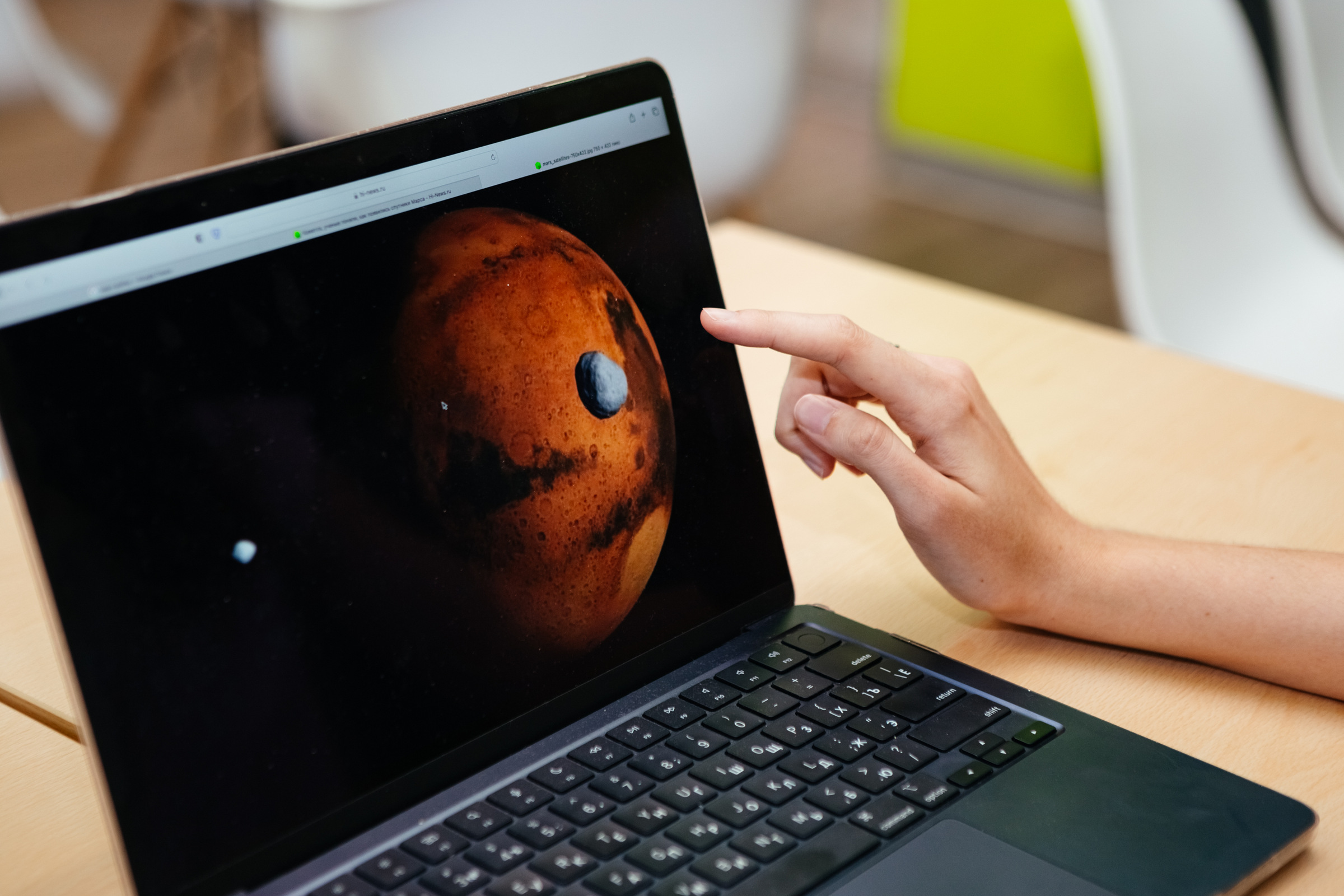This NASA project, unveiled in 2017, has not yet been realized and for the past few years has been presented in public sources only as a general concept, without details or any mathematical justification. Daria Neryadovskaya’s research not only confirms the feasibility of such a project in practice, but also significantly expands the prospects for such research missions – thanks to the student’s calculations, scientists will be able to use a tether to lower a larger load of equipment than expected and explore both sides of Phobos, not just one, as stated in the original concept of the PHLOTE project. In addition, these calculations are applicable to the organization of missions to other similar satellites of the planets of the solar system, for example, to another satellite of Mars – Deimos. Daria Neryadovskaya’s work was supported by a grant from the Russian Science Foundation (Project No. 19-19-00085).
“The use of tether systems for the study and exploration of the planets of the solar system and their satellites is one of the urgent tasks of modern astronautics. Much attention is currently being paid to the study of Mars’ satellite Phobos, the origin of which has not yet been determined. The results of the study confirm the possibility of a PHLOTE-like mission with the construction of a “space elevator” and the descent of equipment and sensors on a special tether from a spacecraft at the libration point,” said Daria Neryadovskaya. “To prepare such a research mission, it is, first of all, necessary to develop a theoretical justification, to obtain confirmation that this project is feasible, and this, in turn, requires a large bulk of analytical and numerical calculations of various models of the tether system motion and methods of its control. NASA’s public materials do not provide any analysis of the calculations, only some data. Therefore, the calculations I have performed may help in the future to realize a similar mission to study Phobos or another natural satellite, which is in similar conditions to Phobos.”
According to NASA’s mission concept, the PHLOTE space probe, positioned at an altitude of about 3 kilometers from the surface of Phobos, will lower a vehicle with instruments and sensors on a carbon nanotube tether. In one version of the project, the apparatus with instruments will descend directly to the surface of the satellite, in the other – will stop at an altitude of 400 meters. Once the research cycle is complete, the descent vehicle can be lifted back aboard the probe and delivered to Earth or used elsewhere in space.
As calculated earlier by scientists, in order for the space elevator to work as stable and reliable as possible, the centre of gravity of the tether system should be located in one of the Lagrange, or libration, points, in the Mars – Phobos system: L1 or L2. In these special points of outer space – Lagrange points – various physical forces compensate for each other’s mutual effects in such a way that a small object positioned at the point attains gravitational “weightlessness”, or gravitational equilibrium: it does not gravitate towards either of the two massive rotating celestial bodies that affect it (for example, Mars and Phobos). Therefore, the trajectory of motion of the object located in the Lagrange point turns out to be very stable and little affected by external influence.
NASA’s project plans to use only one libration point, L1. The Samara student also calculated the parameters for the tether system placed at point L2, which is located on the reverse side of Phobos, invisible from Mars (in this regard, Phobos is similar to the Earth’s Moon). Two space elevators will allow the Martian moon to be studied from both sides. In addition, the calculations allow increasing the mass of the vehicle with instruments and sensors up to 50 kg, depending on the capabilities of the space probe. In NASA’s design, the mass of the descent vehicle is only 15 kg.
“My calculations expand the prospects of the PHLOTE project to explore Phobos. By placing the tether systems at collinear libration points L1 and L2, the entire Martian satellite surface can be remotely surveyed. With a video surveillance system placed over Phobos, it will be possible to monitor the progress of a research mission landing on its surface from fairly close distance. In addition, such an “elevator” can serve as an intermediate station for research related to the study of the surrounding outer space, and as an intermediate site for interplanetary flights – for example, for landing on Mars or for return from Mars to Earth,” says Daria Neryadovskaya.
For reference:
*The scientific paper has been published in the reputable international journal Aerospace: Aslanov V. S., Neryadovskaya D. V. A Tether System at the L 1, L 2 Collinear Libration Points of the Mars–Phobos System: Analytical Solutions // Aerospace. – 2023. – V. 10. – No. 6. – P. 541.
**Phobos (ancient Greek for “fear”) is one of the two satellites of Mars, along with Deimos (ancient Greek for “terror”). Both satellites were discovered in 1877 by American astronomer Asaph Hall. A century and a half earlier, in his 1726 novel Gulliver’s Travels, Jonathan Swift wrote that astronomers on the flying island of Laputu had discovered two satellites of Mars. The cosmic origin of either of the Martian satellites is still unclear.
***Lagrange points (libration points) exist in systems consisting of two massive celestial bodies (e.g., Earth and Moon or Earth and Sun), where the body with the lower mass rotates around the body with the higher mass. Due to mutual balancing of centrifugal force and gravitational forces in such systems, there are five spatial points in which a third body with very small mass (e.g., a satellite or interplanetary dust particles) can remain stationary in a rotating frame of reference associated with massive bodies. Lagrange points were named after the French mathematician Joseph Louis Lagrange, who made a conclusion about the existence of these special points by mathematical calculations in 1772.
Photo: Olesya Orina
 RU
RU  EN
EN  CN
CN  ES
ES 



